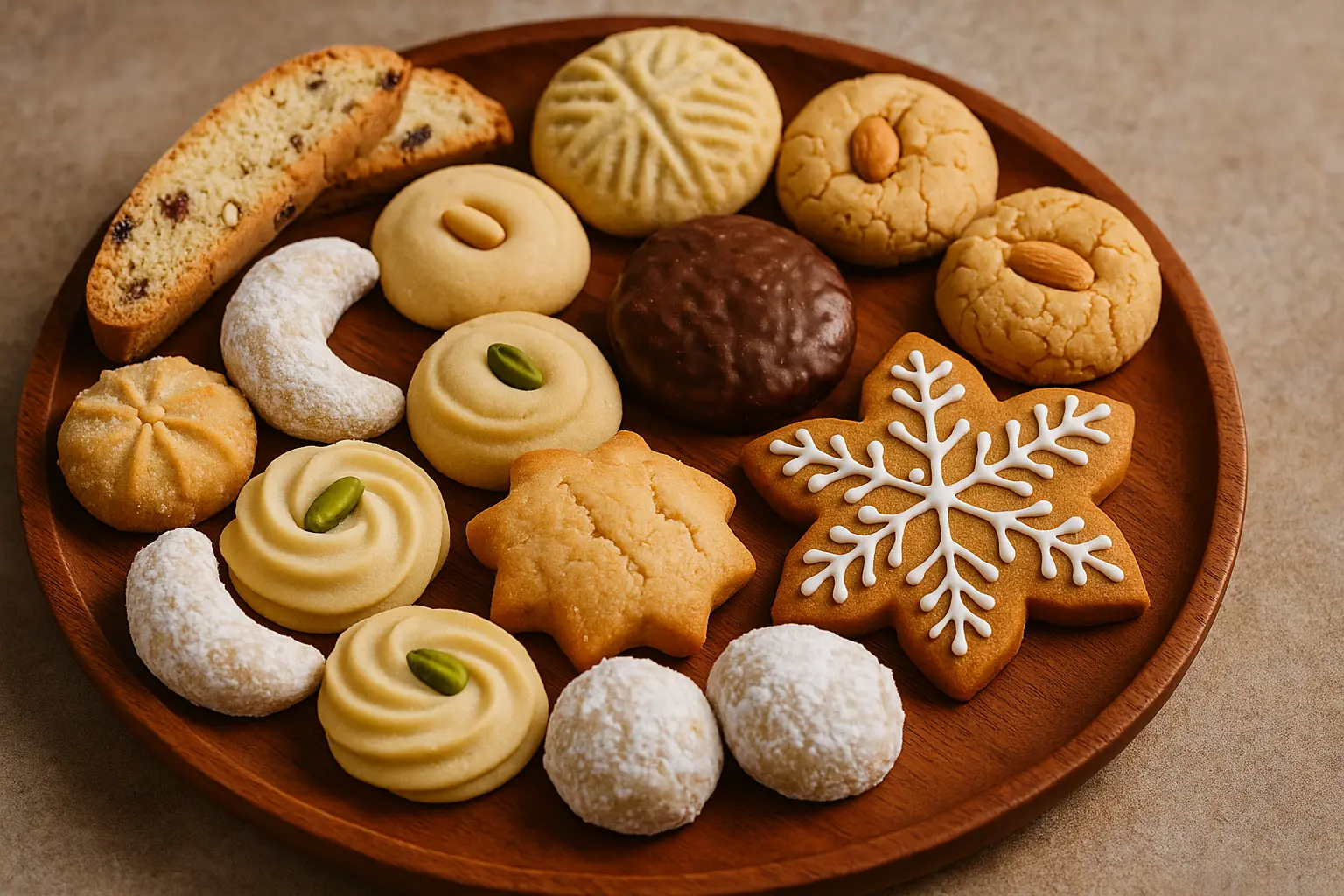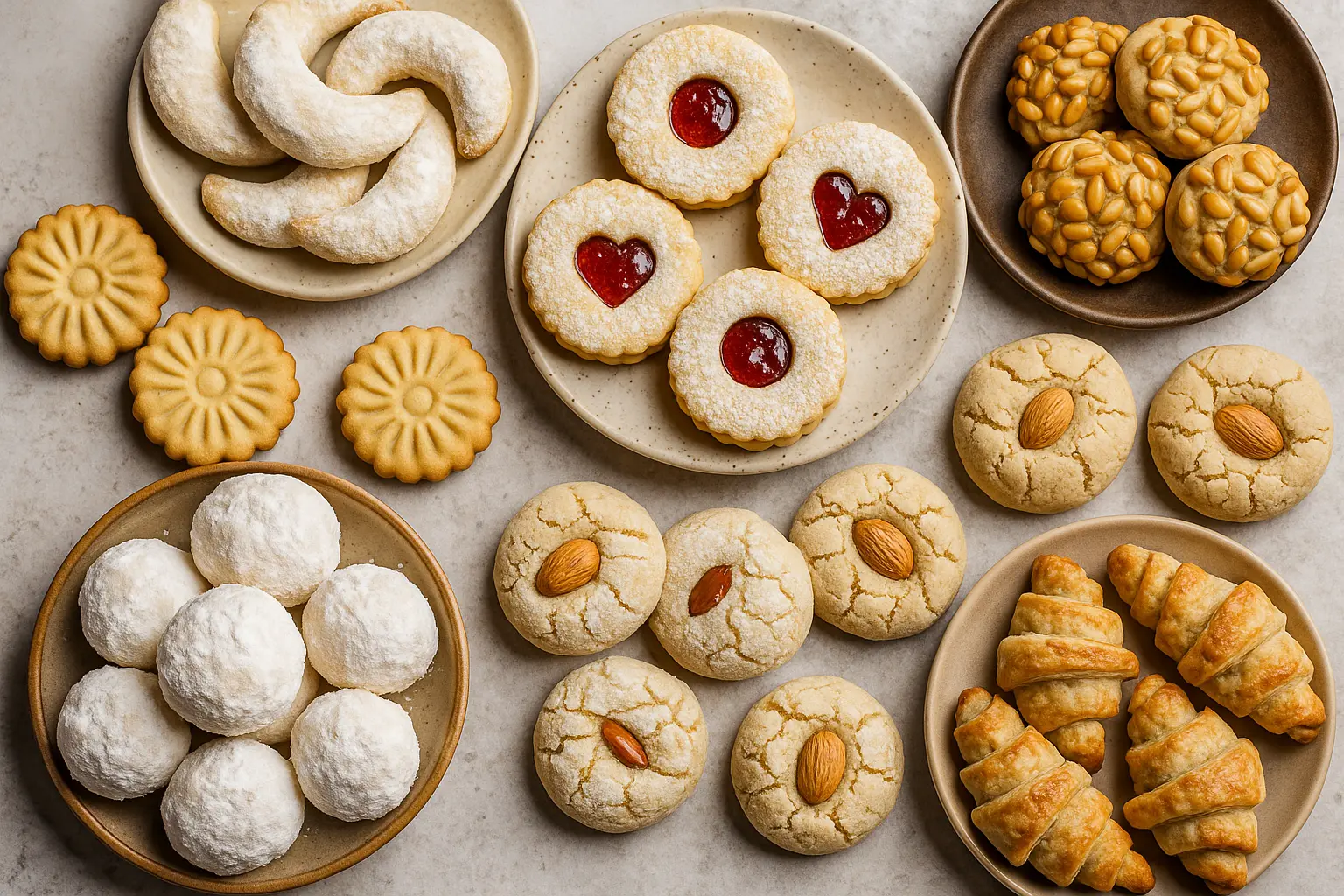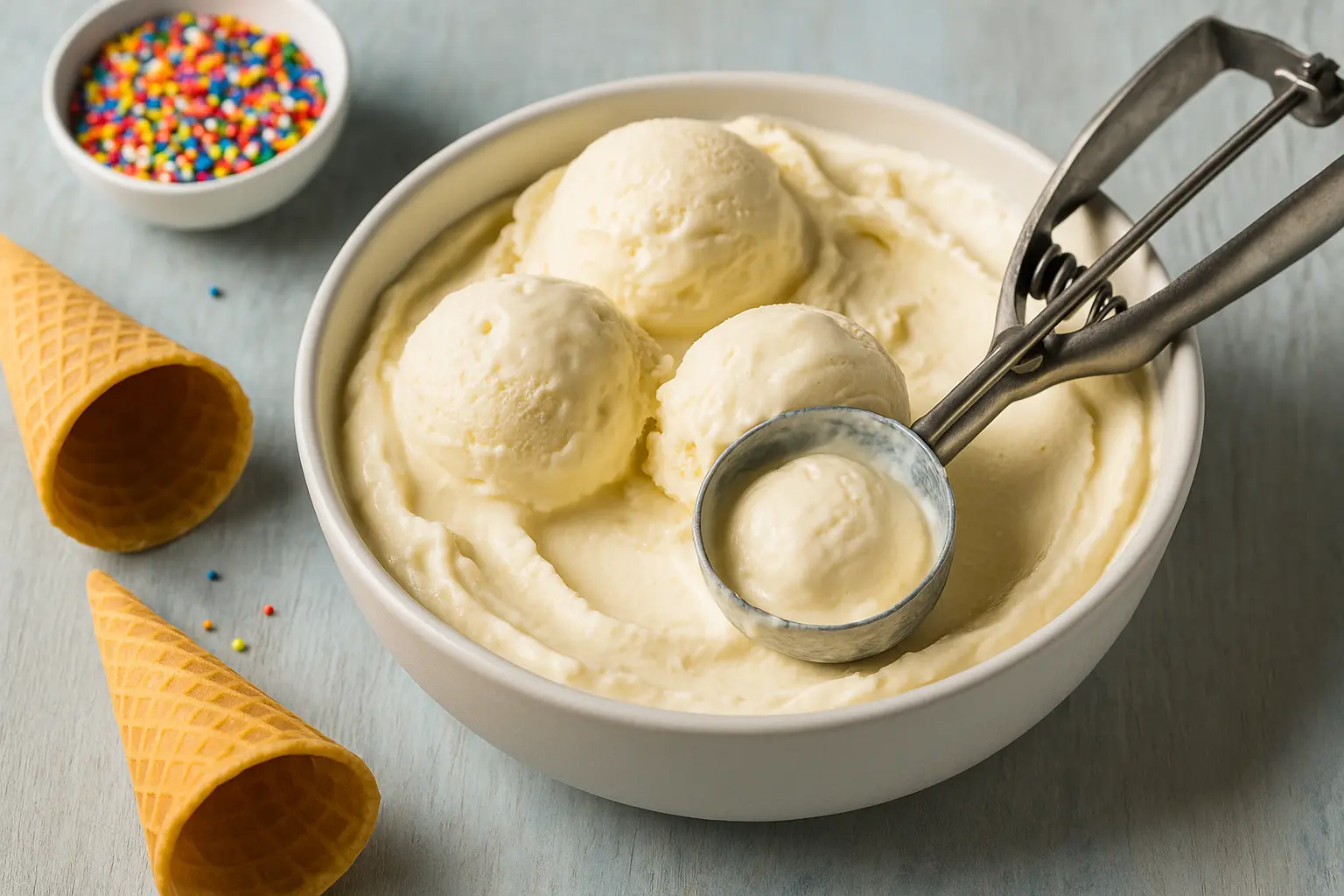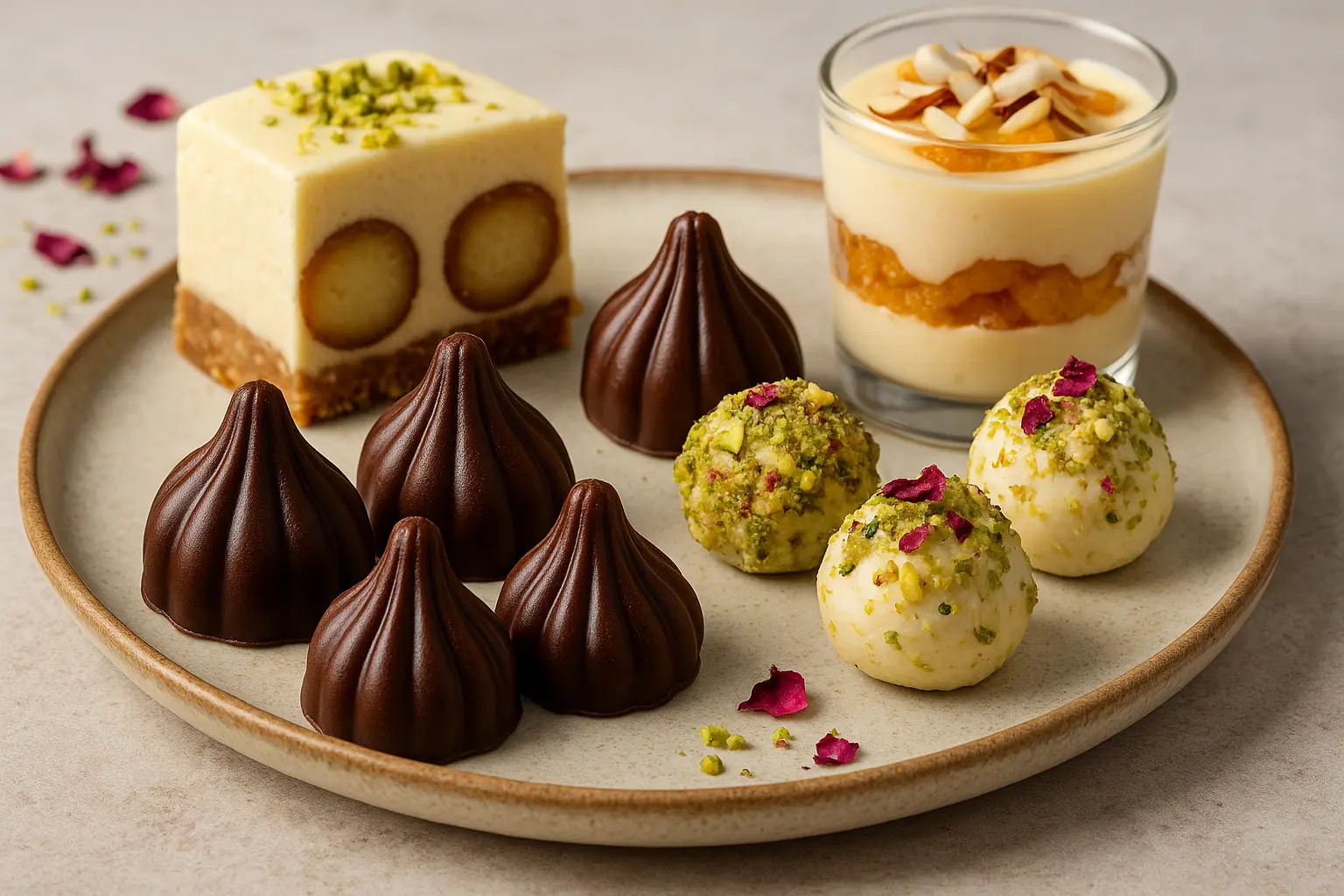Festive cookies hold a special place in celebrations across cultures. Whether served at Christmas in Germany, Lunar New Year in China, Eid in the Middle East, or Diwali in India, cookies transcend borders with their comforting sweetness. Each culture has its signature flavors—some spiced with cinnamon, cloves, and cardamom, others enriched with nuts, butter, or dried fruits.
This article takes you on a global cookie journey, exploring recipes, traditions, and baking techniques. By the end, you’ll have not only a collection of recipes but also a deeper appreciation for how something as simple as a cookie can connect us across continents.

European Festive Cookies
1. German Lebkuchen
Often called “German gingerbread,” Lebkuchen is spiced with cinnamon, cloves, and nutmeg, enriched with nuts and honey, and sometimes glazed with chocolate or sugar. Traditionally baked during Christmas markets, they symbolize warmth and togetherness.
Quick Recipe Snapshot:
- Key Ingredients: Honey, flour, almonds, candied citrus peel, spices.
- Tip: Let the dough rest for a day before baking to deepen flavors.
2. Italian Biscotti (Cantucci)
Originating from Tuscany, biscotti are twice-baked cookies, making them crunchy and perfect for dipping into Vin Santo (sweet wine) or coffee. Almonds are the classic filling, though modern variations include pistachio, cranberry, or chocolate.
3. Polish Pierniki
Similar to gingerbread, these cookies are traditionally baked for Christmas. Often decorated with icing, they can be cut into stars, angels, or heart shapes.
4. Scandinavian Pepparkakor
These Swedish spiced cookies are thin, crispy, and flavored with ginger, cinnamon, and cloves. They’re often cut into stars and snowflakes, making them popular for tree decorations.
Middle Eastern Festive Cookies
5. Ma’amoul
Ma’amoul are shortbread cookies filled with dates, pistachios, or walnuts, traditionally made for Eid or Easter. They’re often pressed into decorative molds that imprint beautiful patterns.
6. Ghorayeba (Egyptian Butter Cookies)
Made with flour, sugar, and ghee, these melt-in-the-mouth cookies are popular during Eid. Their simplicity highlights the richness of ghee, creating a delicate and crumbly texture.
Asian Festive Cookies
7. Chinese Almond Cookies
Often served during Lunar New Year, almond cookies symbolize prosperity. They are buttery, crumbly, and topped with an almond in the center.
8. Indian Nankhatai
These cardamom-spiced shortbread cookies are a staple for Diwali. Made with ghee, flour, and sugar, they’re often topped with pistachios or almonds. Their rich aroma and delicate crumble embody festive indulgence.
9. Filipino Polvorón
A no-bake cookie made with toasted flour, powdered milk, sugar, and butter. Wrapped in colorful cellophane, they’re a common festive treat gifted to family and friends.
American Festive Cookies
10. Mexican Wedding Cookies (Polvorones)
Despite the name, these cookies are often baked for Christmas. Coated in powdered sugar, they’re nutty, buttery, and melt in your mouth.
11. Snickerdoodles (USA)
These cinnamon-sugar coated cookies are a Christmas classic in the United States. Their tangy flavor comes from cream of tartar, which sets them apart from regular sugar cookies.
12. Canadian Maple Cookies
Shaped like maple leaves and sweetened with maple syrup, these cookies embody Canadian festive traditions.
African Festive Cookies
13. Moroccan Ghriba
These crumbly cookies are flavored with almonds, sesame, or coconut. They’re dusted with powdered sugar and often served during Eid or weddings.
14. South African Hertzoggie
A tart-like cookie with a jam and coconut topping, enjoyed during festive gatherings.
How to Host a Global Cookie Exchange
One fun way to celebrate these traditions is by hosting a cookie exchange—each guest brings a batch inspired by a different culture. This not only shares the workload but also introduces everyone to new flavors.
Tips for a Global Cookie Exchange:
- Provide recipe cards so guests can recreate their favorites.
- Use world map decorations to highlight cookie origins.
- Pair cookies with traditional drinks: German Lebkuchen with mulled wine, Ma’amoul with Arabic coffee, Biscotti with Vin Santo.
Baking Tips Across Borders
- Spices: Freshly ground spices elevate festive cookies.
- Resting Dough: Many recipes (like Lebkuchen or Nankhatai) benefit from resting time to develop flavors.
- Decoration: Use cultural motifs—icing snowflakes, imprinted molds, or powdered sugar dusting.
- Storage: Most festive cookies store well in airtight tins, making them perfect for gifting.
Modern Twists on Traditional Cookies
- Gluten-free Nankhatai using almond flour.
- Vegan Ma’amoul with coconut oil instead of butter.
- Keto-friendly biscotti with almond flour and erythritol.
- Air-fryer versions of Polvorón for a lighter take.
Conclusion: Cookies as Cultural Storytellers
Festive cookies are more than baked treats; they are edible stories. Each cookie carries history, tradition, and cultural pride. By baking and sharing them, we preserve global traditions and create moments of joy. Whether you’re baking German Lebkuchen, Indian Nankhatai, or Moroccan Ghriba, these cookies offer a sweet way to travel the world from your kitchen.
So this holiday season, preheat your oven, gather your ingredients, and celebrate global unity—one cookie at a time.
Leave a comment
Your email address will not be published. Required fields are marked *




















